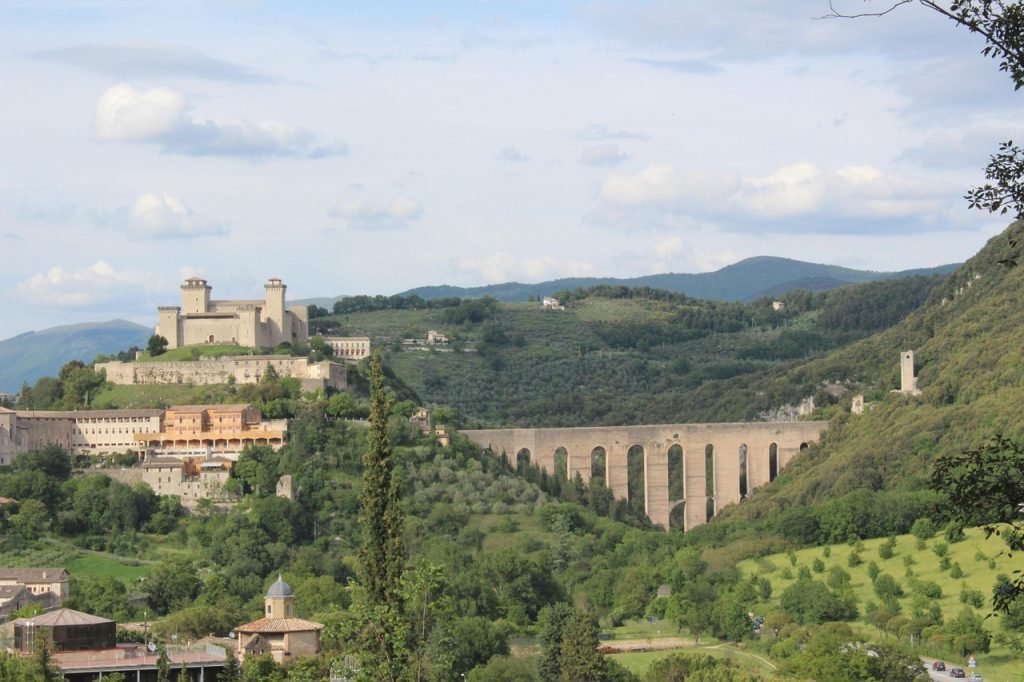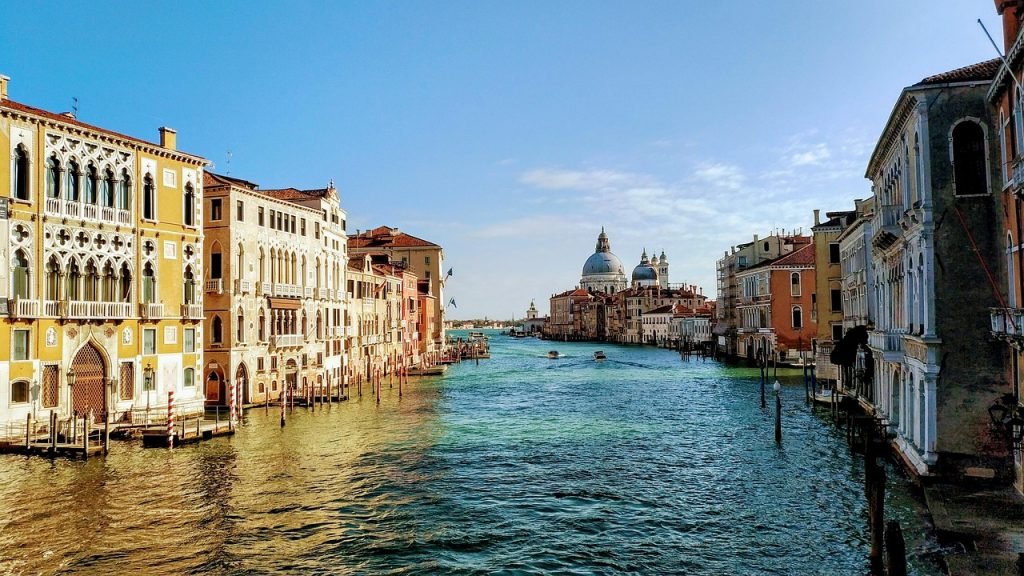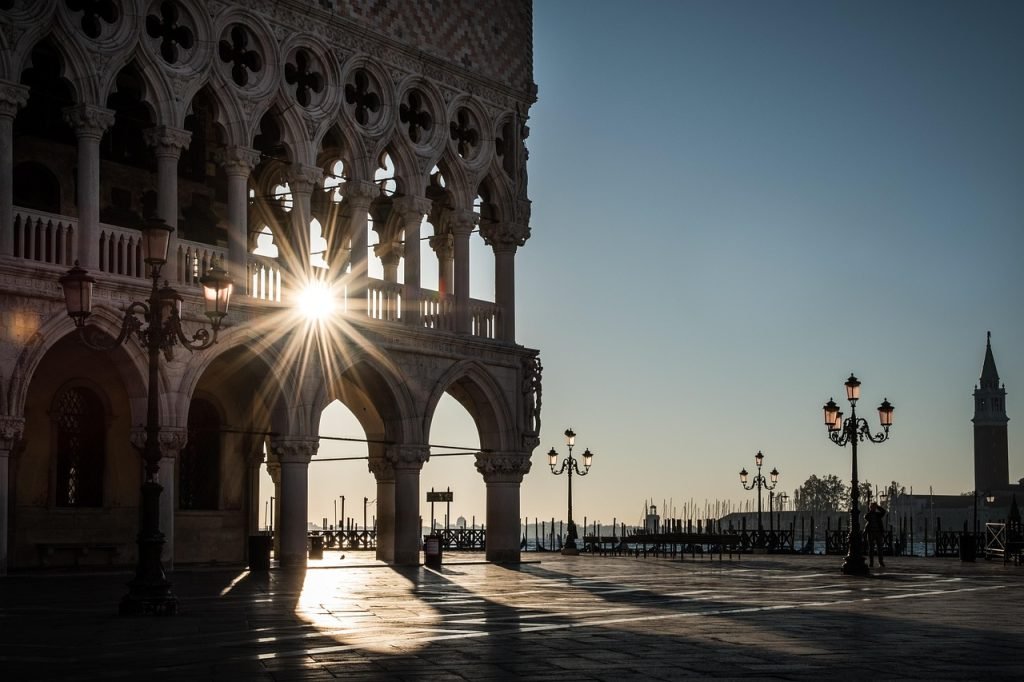Umbria whispers where Tuscany shouts. This mystical region, cradled in the very heart of Italy, reveals its secrets slowly to those who dare to venture beyond the well-trodden tourist paths. Here, in the “Green Heart of Italy,” every winding road leads to discoveries that will forever change your understanding of what makes Italy truly magical.
This circular journey begins and ends in Perugia, taking you through landscapes that inspired saints and artists. From the chocolate capital through spiritual Assisi to the surreal artistry of La Scarzuola, a perfect loop through Umbria’s most treasured destinations.
Your Heart of Italy Journey at a Glance
Total Distance: Approximately 420 kilometers in a scenic circular route.
Recommended Duration: 7 days (though each destination deserves much longer).
Best Time to Visit: April-June and September-October for perfect weather and authentic experiences.
Day 1: Perugia – The Chocolate Capital’s Cultural Treasures
Driving Time from Rome: 2 hours | From Florence: 2 hours
Begin your Umbrian odyssey in Perugia, the region’s vibrant capital that seamlessly blends university energy with Etruscan mysteries, Renaissance artistry with contemporary chocolate culture. This hilltop city commands sweeping valley views while harboring artistic treasures and culinary traditions that make it the perfect introduction to Umbria’s multifaceted character.
Perugia’s Rich Tapestry
- Palazzo dei Priori and Galleria Nazionale – This imposing Gothic palace houses one of Italy’s finest art collections. The Sala dei Notari, with its stunning frescoed ceiling, demonstrates medieval civic pride at its most magnificent.
- Rocca Paolina – The underground remains of this papal fortress, create a fascinating subterranean city accessible by modern escalators. Walking through these Renaissance ruins provides insight into papal power.
- Etruscan Arch and Walls – The Arco Etrusco, dating to the 3rd century BC, demonstrates Perugia’s ancient importance. These massive stones support 2,300 years of continuous urban development.
- University Quarter – One of Europe’s oldest universities (founded 1308) creates vibrant student energy that contrasts beautifully with ancient surroundings. The evening aperitivo culture and lively piazzas provide authentic contemporary Italian experiences.
- Perugina Chocolate Factory – The original home of Baci chocolates offers tours that reveal the sweet side of Umbrian industry.
Day 2: Assisi – Where Heaven Touches Earth
Distance from Perugia: 25 km | Driving Time: 30 minutes
Continue your spiritual journey in Assisi, the city that gave the world Saint Francis and forever changed the relationship between spirituality and nature. Climbing the slopes of Monte Subasio like a medieval prayer made manifest, Assisi creates an immediate sense of pilgrimage, whether you’re religious or simply seeking beauty that transcends the ordinary.
Assisi’s Sacred Wonders
The Basilica of Saint Francis stands as a UNESCO masterpiece consisting of two churches stacked like spiritual layers. The Lower Basilica, dark and contemplative, houses Giotto’s revolutionary frescoes depicting Saint Francis’s life with humanity and emotion never before seen in religious art. The Upper Basilica, bright and colorful, soars toward heaven with Gothic arches. The crypt containing Saint Francis’s tomb creates an atmosphere so profound that even skeptics find themselves moved to unexpected silence.
The Basilica of Santa Chiara, often overshadowed by its famous neighbor, offers equally powerful spiritual experiences. The Byzantine crucifix that spoke to Saint Francis hangs here. The church’s simple elegance embodies Franciscan ideals of poverty and beauty.
The Temple of Minerva, this remarkably preserved Roman temple turned church, demonstrates Assisi’s layered history. Goethe declared it the most beautiful classical facade he’d ever seen.
Day 3: Spello & Spoleto – Rose Petals and Renaissance Frescoes
Morning in Spello
Distance from Assisi: 12 km | Driving Time: 20 minutes
Begin your day in Spello, the “Balcony of Umbria”, amid gardens overflowing with roses, geraniums, and climbing vines. This perfectly preserved Roman town creates an atmosphere of intimate beauty that feels like discovering a well-kept secret.
Spello’s Morning Magic
Pinturicchio’s frescoes in Santa Maria Maggiore represent the artist’s masterwork, rivaling anything in Rome or Florence. Scenes from Christ’s life shine with colors that seem freshly painted, while architectural details demonstrate why Pinturicchio was considered among the Renaissance’s greatest masters.
The Roman Gates and Walls, including the magnificent Porta Consolare and Porta Venere, showcase extraordinary preservation. Walking through these ancient gateways connects you directly to 2,000 years of continuous habitation. The flower-lined streets maintain a tradition where residents decorate medieval pathways with elaborate floral displays.
Spend your afternoon in Spoleto, a city that climbs steep hillsides with theatrical flair, creating unexpected vistas and architectural surprises around every corner. Famous worldwide for its summer festival, Spoleto maintains year-round sophistication reflecting its history as a powerful Lombard duchy.
Spoleto’s Artistic Heights
The Cathedral of Santa Maria Assunta greets you with its Renaissance portico and stunning rose window, introducing treasures within where Filippo Lippi’s frescoes rank among Umbria’s finest Renaissance paintings. Rocca Albornoziana, the 14th-century papal fortress, dominates Spoleto’s skyline with imposing authority. Recently restored and opened to public, it offers both historical exhibits and panoramic views encompassing the entire Umbrian valley.
The Ponte delle Torri remains one of medieval engineering’s most extraordinary achievements—this 14th-century aqueduct bridge spans a deep ravine with ten Gothic arches that seem to leap impossibly through space. The engineering rivals Roman works while creating one of Italy’s most photographed medieval structures.
The Roman Theater, still used for summer festival performances, demonstrates Spoleto’s continuous cultural importance. The semicircular seating carved into the hillside creates perfect acoustics that modern concert halls struggle to match.
Day 4: Cascate delle Marmore & Todi – Nature’s Thunder and Medieval Perfection
Morning at Cascate delle Marmore
Distance from Spoleto: 45 km | Driving Time: 50 minutes
Begin your day experiencing one of Europe’s most spectacular waterfall displays, where Roman engineering merged with natural forces to produce a thundering cascade that drops 165 meters in three magnificent tiers. This isn’t merely a waterfall – it’s a sensory experience that engulfs visitors in mist, sound, and the raw power of controlled nature.
Experiencing the Marmore Falls
These falls resulted from Roman engineering prowess when ancient engineers diverted the Velino River to prevent flooding. The artificial nature somehow enhances rather than diminishes the spectacle, demonstrating humanity’s ability to collaborate with rather than merely exploit natural forces.
Multiple viewing platforms offer completely different experiences. The lower viewpoint places you at the base of the thundering cascade. Here mist creates constant rainbows and the sound becomes almost overwhelming. The upper viewpoint provides panoramic perspectives that reveal the falls’ full dramatic scope.
Spend your afternoon in Todi, which embodies medieval perfection so complete it almost seems artificially preserved. Perched on a triangular hilltop commanding the Tiber Valley, this small city achieved such architectural harmony that urban planners study it as an example of ideal city design.
Todi’s Timeless Treasures
Piazza del Popolo represents one of Italy’s most beautiful medieval urban spaces. The Palazzo del Popolo, with its Gothic windows and crenellated tower, faces the Romanesque-Gothic cathedral across cobblestones worn smooth by seven centuries of daily life. The proportions achieve such perfection that the square feels like an outdoor cathedral dedicated to civic harmony.
The Cathedral of the Annunciation conceals treasures within its pink-and-white marble facade, including a spectacular wooden choir and a Last Judgment fresco that rivals more famous versions. The cathedral’s elevated position requires a dramatic staircase ascent that builds anticipation for artistic revelations inside.
Church of San Fortunato, this unfinished Gothic church houses the tomb of Jacopone da Todi, the mystical poet whose verses influenced Dante. The bell tower offers sweeping valley views that explain why Todi commanded such strategic importance.
Day 5: Orvieto – Cathedral Dreams and Underground Mysteries
Distance from Todi: 45 km | Driving Time: 50 minutes
Orvieto rises from volcanic tufa rock like a medieval dream made manifest, its cathedral facade glittering with mosaics visible for kilometers across the Umbrian countryside. This cliff-top city combines artistic masterpieces with mysterious underground networks, creating layers of discovery that reward extended exploration. Dedicate a full day to truly appreciate this UNESCO World Heritage treasure.
Orvieto’s Magnificent Treasures
The Duomo di Orvieto represents one of Italy’s most spectacular facades, with gold mosaics depicting biblical scenes that seem to glow with inner light. The rose window, designed by Andrea Orcagna, achieves geometric perfection while bronze doors tell sacred stories with sculptural eloquence. Inside, Luca Signorelli’s Last Judgment frescoes in the San Brizio Chapel influenced Michelangelo’s Sistine Chapel work and demonstrate Renaissance painting at its most powerful.
Underground Orvieto reveals a fascinating network of caves, tunnels, and chambers carved from volcanic tufa over 2,500 years. These underground spaces served as storage areas, workshops, and emergency shelters, creating a hidden city that rivals the visible one above. Guided tours reveal Etruscan wells, medieval olive mills, and World War II air raid shelters.
The Palazzo del Popolo demonstrates Orvieto’s medieval prosperity and political importance. The combination of tufa stone and Gothic windows creates architectural harmony that perfectly complements the cathedral across the square.
Day 6: Civita di Bagnoregio & Bolsena – The Dying City and Lakeside Serenity
Morning at Civita di Bagnoregio
Distance from Orvieto: 20 km | Driving Time: 30 minutes
Begin your day with one of Italy’s most extraordinary sights: Civita di Bagnoregio, the “Dying City” that earns its nickname from constant erosion gradually reducing its tufa foundation. This apparent mortality creates urgency that makes every visit feel precious, while the dramatic setting provides an unforgettable experience that epitomizes medieval Italy’s ethereal beauty.
Civita’s Timeless Magic
The dramatic pedestrian bridge spanning the eroded valley creates an almost spiritual approach to the ancient city. Each step builds anticipation while providing increasingly spectacular views of the medieval settlement clinging to its shrinking island of rock. This approach becomes part of the pilgrimage-like experience.
With only a handful of permanent residents, Civita maintains authentic medieval character impossible to find in more developed towns. Stone houses, narrow streets, and tiny squares create an atmosphere where time seems suspended between past and present, enhanced by constant awareness of geological fragility.
The constant erosion that threatens Civita’s existence also creates its unique beauty. Dramatic cliffs, carved by wind and water into fantastic shapes, provide a theatrical backdrop that changes with every season and storm, making each visit subtly different from the last.
Conclude your southern Umbria exploration at Lake Bolsena, Italy’s largest volcanic lake, where crystal-clear waters reflect medieval towers and volcanic islands create an almost mystical atmosphere. This peaceful destination provides perfect contrast to both Orvieto’s artistic intensity and Civita’s geological drama.
Bolsena’s Serene Beauty
Lake Bolsena formed in an ancient volcanic caldera, maintaining exceptional clarity that allows visibility to remarkable depths. The lake’s two islands, Bisentina and Martana, add mysterious focal points to panoramic views that stretch across volcanic landscapes toward distant mountains.
Castello Monaldeschi houses a museum showcasing the lake’s geological and cultural history while providing elevated views across the entire volcanic basin. The combination of natural and human history creates fascinating insights into how geography shapes civilization.
The lakeside promenade offers peaceful walking paths, outdoor cafes, and swimming opportunities in some of Italy’s cleanest lake waters. Local restaurants specialize in lake fish prepared with traditional recipes, providing culinary experiences unavailable in landlocked Umbrian towns.
Day 7: La Scarzuola & Return to Perugia – Architectural Fantasy and Journey’s End
Morning at La Scarzuola
Distance from Bolsena: 50 km | Driving Time: 1 hour
Begin your final day with one of Italy’s most extraordinary and least-known treasures – La Scarzuola, a surreal architectural fantasy that seems to emerge from a fever dream rather than rational planning. Created by Milanese architect Tomaso Buzzi as his personal vision of an “ideal city,” this complex challenges every assumption about architecture, reality, and artistic expression.
The Surreal World of La Scarzuola
The Sacred and Profane coexist as Buzzi’s creation stands beside the humble 13th-century convent where Saint Francis planted a scarza (a type of plant) that gave the site its name. The juxtaposition between Franciscan simplicity and Buzzi’s elaborate fantasy creates philosophical tensions that enhance both experiences while connecting to your earlier Assisi pilgrimage.
Buzzi envisioned La Scarzuola as a “teatro del mondo” (theater of the world), where architecture becomes performance art. Classical references merge with modernist experiments, creating spaces that feel simultaneously ancient and futuristic—the perfect counterpoint to the medieval perfection you’ve experienced throughout Umbria.
La Scarzuola requires advance booking and guided tours (usually conducted by Buzzi’s nephew), making each visit feel like an intimate artistic revelation. The passionate explanations transform architectural viewing into philosophical exploration, providing intellectual depth that enhances the visual spectacle.
Complete your circular Umbrian journey by returning to Perugia, where the adventure began. The drive through rolling hills and medieval towns provides perfect transition time to process the week’s extraordinary experiences and appreciate how each destination contributed to understanding Italy’s heart.
Final Reflections on Umbria’s Heart
This circular journey through Umbria reveals Italy at its most authentic and profound. Unlike the grand spectacles of Rome, Umbria whispers its secrets to visitors willing to slow down. Listen carefully, and appreciate subtlety over showmanship.
The magic emerges not just from individual sites but from the cumulative experience of traveling through landscapes essentially unchanged since medieval times, staying in family-owned accommodations where traditions pass between generations, dining on recipes perfected over centuries, and discovering that authentic Italy thrives for those willing to venture beyond obvious destinations.
Umbria teaches patience, rewards curiosity, and celebrates the quiet pleasures that define Italian life at its most genuine. The circular route creates narrative completeness while allowing spontaneous discoveries that often prove more memorable than planned destinations.
Pack comfortable walking shoes for cobblestone streets and ancient stairs, bring appetite for both culinary and cultural experiences, and prepare for a week that will forever change your understanding of what makes Italy’s heart beat with such enduring magic. In Umbria, you’ll discover not just beautiful destinations, but a way of being that prioritizes beauty, community, and timeless values over modern urgencies.
This is Italy as it was meant to be experienced: as a gradual revelation rather than a hurried conquest, as a conversation with history rather than consumption of attractions, as a journey toward understanding rather than mere sightseeing. Welcome to the heart of Italy – prepare to leave a piece of your own heart behind.


